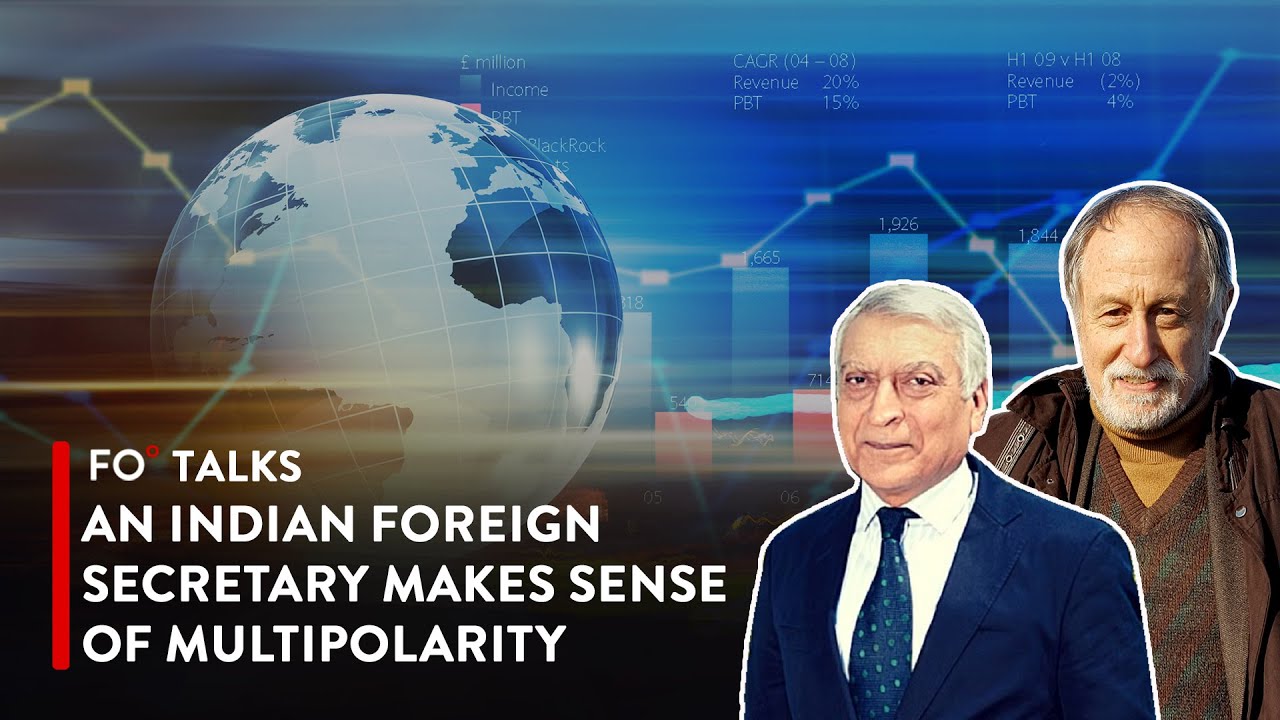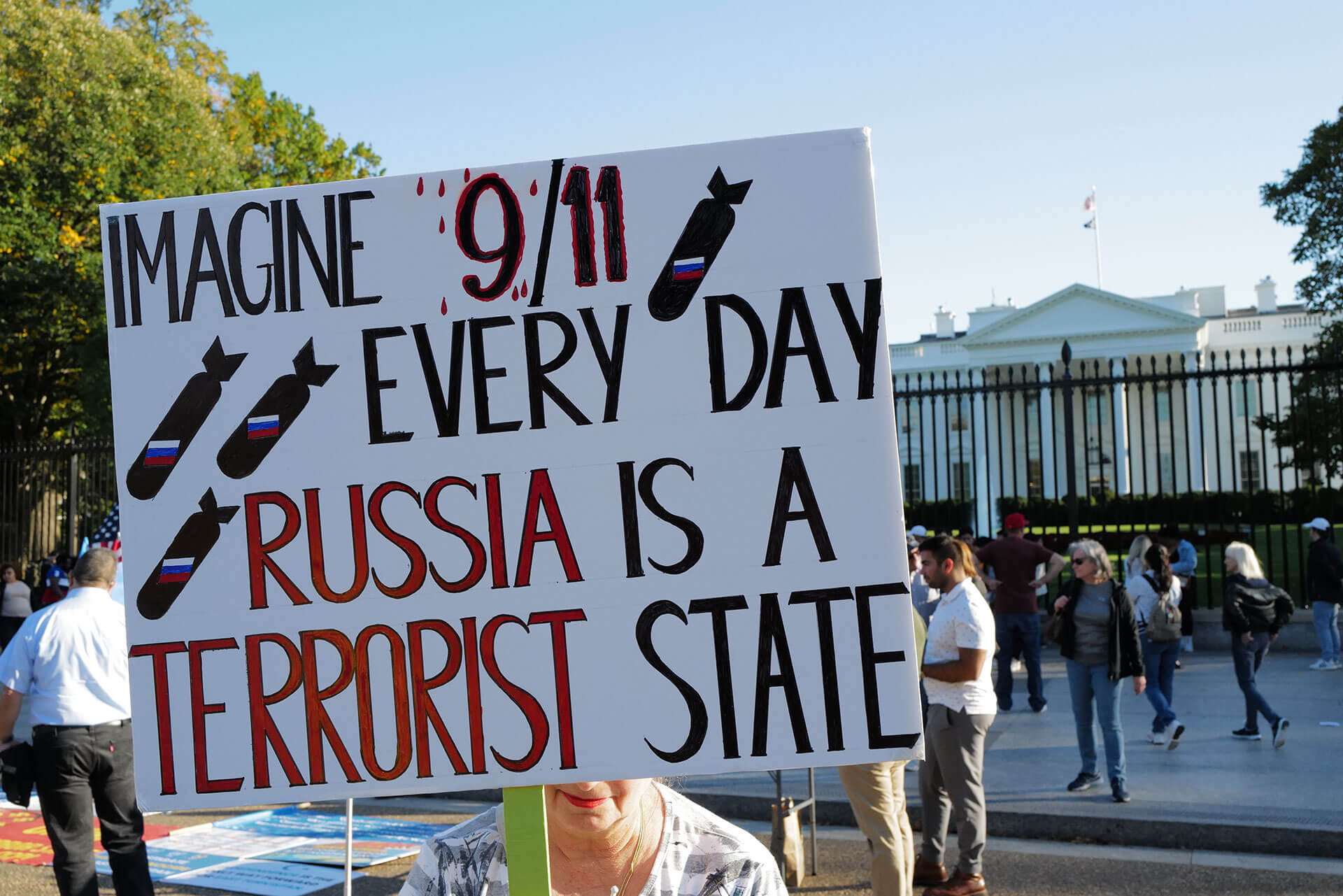An influential article by Ashley Tellis that appeared this month in Foreign Affairs bore the title “America’s Bad Bet on India.” Tellis describes the complex relationship between the US and India that appears to have taken policy strategists in Washington by surprise. Adept at dividing the world into two opposing camps, they are left wondering: Is India — the world’s largest democracy — a friend or a foe?
The US has long had a predilection for classifying every nation in the world as either an ally or an enemy. Two decades ago, when George W Bush publicly lamented the threat of an imagined “axis of evil,” he summarized the moral issue for the world’s heads of state in these terms: “Every nation, in every region, now has a decision to make. Either you are with us, or you are with the terrorists.”
The binary division of humanity that followed World War II, known as the Cold War, was somewhat artificially crafted in Washington to define America’s ambitious post-war mission in a new world order. The US sensed an opportunity to impose its leadership over a chaotic configuration of decomposing colonial empires. When, in 1947, India, the crown jewel of the British empire, achieved its formal independence, setting the tone for other nations in Asia and Africa, the US began mulling over the means by which it could step into the former empire’s shoes without appearing to be a neo-colonialist power.
The old system of nation state rivalries exploiting disparate empires began its unintended campaign of self-destruction in 1914 with the outbreak of World War I. It took a second world war to clear the chessboard and turn the kaleidoscope of European colonialism into a game of black vs white. In 1954, President Dwight Eisenhower described a “world, once divided by oceans and mountain ranges” as “now split by hostile concepts of man’s character and nature.”
President “Ike” imagined a world in which god-fearing capitalism was engaged in a struggle against atheistic communism. The land of free enterprise confronted the drab, collectivist nightmare. Every nation had to choose its allegiance, just as local barons once did in feudal Europe, when vassals were beholden to their local “liege lords.”
In the Cold War, this medieval notion still retained its metaphorical power. It no longer defined a position of subservience to regional monarchs, but to nation states. In contrast with Europe’s 19th century innovation of a “concert of nations,” the new geopolitics put allegiance at the core of its operating procedures. The idea came from the US. In the aftermath of a traumatic Civil War (1861-65), the US had imposed on all Americans a “pledge of allegiance” to a “one nation indivisible.” In 1954 Eisenhower added the phrase, “under God” to the text of the pledge to highlight the contrast with Marxist infidels.
At one point in his article Tellis makes an important assertion about India’s culture and political intentions. “It does not harbor any innate allegiance toward preserving the liberal international order and retains an enduring aversion toward participating in mutual defense.”
Today’s Weekly Devil’s Dictionary definition:
Innate allegiance:
- In its original signification, the natural organic connection between people and the land, family or institutional environment of their origins.
- In the post-Cold War, the expected adhesion of “free” nations to the dominant neo-liberal ideology.
Contextual note
The lack of innate allegiance doesn’t necessarily prevent collaboration. Tellis notes that, despite India’s ingrained preference for non-alignment, “the United States and India work together in ways that would have been unimaginable during the Cold War. For example, they cooperate to monitor China’s economic and military activities throughout the wider Indian Ocean region and have recently invested in mechanisms to share near-real-time information about shipping movements.”
Aware of an already traditional distrust, if not enmity reigning between New Delhi and Beijing, Beltway pundits have long supposed that any enemy of China must be a friend of the US. Moreover, India has accepted to use English – the language of modern civilization – at least as its internal lingua franca. That makes the choice of allegiance even easier.
It may therefore seem paradoxical that, despite a very real fascination with all things American, India has not allowed the US, even symbolically, to step into the role Britain once played as its colonial liege lord. Tellis notes that “there remains an unbridgeable gap between the two countries, given India’s consistent desire to avoid becoming the junior partner—or even a confederate—of any great power.”
Throughout the Cold War and during the “unipolar moment” that followed the fall of the Soviet Union, the US settled into its place at the concentric center of a “rules-based order.” Americans were the “good guys,” defining what a good-guys lifestyle would look like. US President Joe Biden, following Eisenhower’s lead, felt it necessary to insist that the world is ruled by a binary opposition, with democracies on one side and autocracies on the other. Casting India’s Prime Minister Narendra Modi in the role of an Oriental despot despite recognizing India as the world’s biggest democracy, the media in the US struggled to decide whether India should be placed in the democratic or autocratic camp.
Historical note
Eisenhower was clear about the distinction between the two ideological rivals: the US and the Soviet Union.
“Two world camps, whose geographic boundaries in important areas are mutually shared, lie farther apart in motivation and conduct than the poles in space. One is dedicated to the freedom of the individual and to the right of all to live in peace—the other to the atheistic philosophy of materialism, and the effort to establish its sway over all the earth. Watching the two opposing camps are hundreds of millions still undecided in active loyalty.”
Even someone with a rigidly binary vision can understand, as Ike did, that some nations fall into the category of “undecided. ” Americans tend to think of that as a weak-kneed attitude of “sitting on the fence.”
In the initial phase of the Cold War, India’s Jawaharlal Nehru was one of the leaders of the non-alignment movement, alongside other leaders, such as Sukarno in Indonesia, Nasser in Egypt and Nkrumah in Ghana. For Americans obsessed by the “domino theory,” non-alignment implied the risk of falling into the grip of atheistic communism. US foreign policy strove to prevent that from happening, even when the motivating factor was national sovereignty after centuries of European colonization rather than ideological commitment.
Vietnam perfectly illustrated that confusion. When Washington refused to listen to Ho Chi Minh’s gentle plea for support in his quest to shake off France’s colonial yoke, the Soviets obliged. According to the reigning binary logic, accepting Soviet aid identified the nation’s national liberation front, the Viet Cong as ideologically communist. It became a threat to be eliminated at all costs. When the French failed after the battle of Ðiện Biên Phủ in 1954, the US stepped in and eventually assumed “the white man’s burden.”
Back in 1954, Eisenhower appeared to accept the existence of “hundreds of millions still undecided in active loyalty.” When, decades later, Biden divided the world into democracies and autocracies, he acknowledged no middle ground. Non-alignment in the 1950s stood up proudly as a legitimate geopolitical stance. Ever since George W Bush, that middle ground has been banished from the binary template imposed on US geopolitical thinking.
This should leave us wondering whether Cold War I wasn’t a bit more flexible and therefore less dangerous than Cold War II. We can nevertheless see one positive trend. Even in the US, obviously hopeful that the existing world order organized around its hegemonic presence persists, mindsets are changing. The idea that we are now moving away from a unipolar world order dominated by the US towards a multipolar world with no unique center of gravity now seems to be taking root, even within the State Department. Many fear it will be unstable and wish to maintain the old system, but as Bob Dylan once said, “the times they are a-changin’.”
Some believe it will be a bipolar world, the US vs China. Others believe it will evolve into something far more varied. No one owns a crystal ball but most serious observers sense that the era of automatic “innate allegiances” based on simplistic ideological contrasts is waning.
*[In the age of Oscar Wilde and Mark Twain, another American wit, the journalist Ambrose Bierce produced a series of satirical definitions of commonly used terms, throwing light on their hidden meanings in real discourse. Bierce eventually collected and published them as a book, The Devil’s Dictionary, in 1911. We have shamelessly appropriated his title in the interest of continuing his wholesome pedagogical effort to enlighten generations of readers of the news.
Read more of Fair Observer Devil’s Dictionary.]
The views expressed in this article are the author’s own and do not necessarily reflect Fair Observer’s editorial policy.
For more than 10 years, Fair Observer has been free, fair and independent. No billionaire owns us, no advertisers control us. We are a reader-supported nonprofit. Unlike many other publications, we keep our content free for readers regardless of where they live or whether they can afford to pay. We have no paywalls and no ads.
In the post-truth era of fake news, echo chambers and filter bubbles, we publish a plurality of perspectives from around the world. Anyone can publish with us, but everyone goes through a rigorous editorial process. So, you get fact-checked, well-reasoned content instead of noise.
We publish 2,500+ voices from 90+ countries. We also conduct education and training programs
on subjects ranging from digital media and journalism to writing and critical thinking. This
doesn’t come cheap. Servers, editors, trainers and web developers cost
money.
Please consider supporting us on a regular basis as a recurring donor or a
sustaining member.
Support Fair Observer
We rely on your support for our independence, diversity and quality.
Will you support FO’s journalism?
We rely on your support for our independence, diversity and quality.






